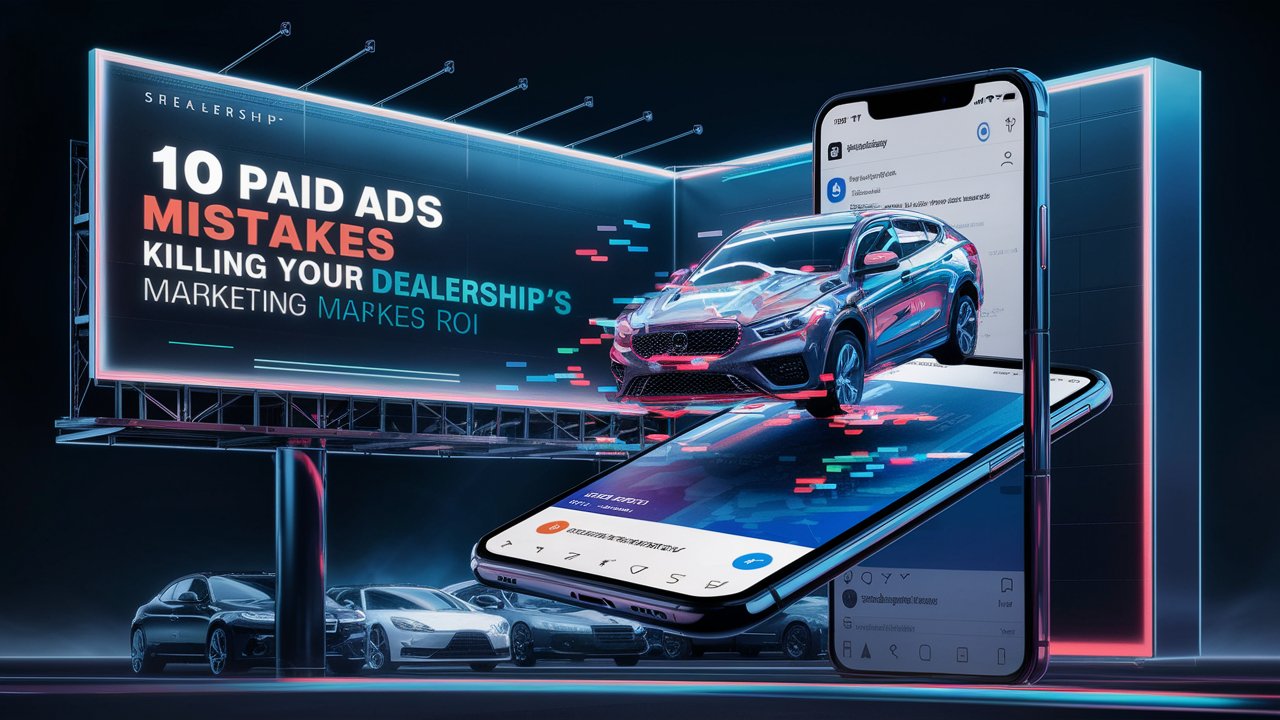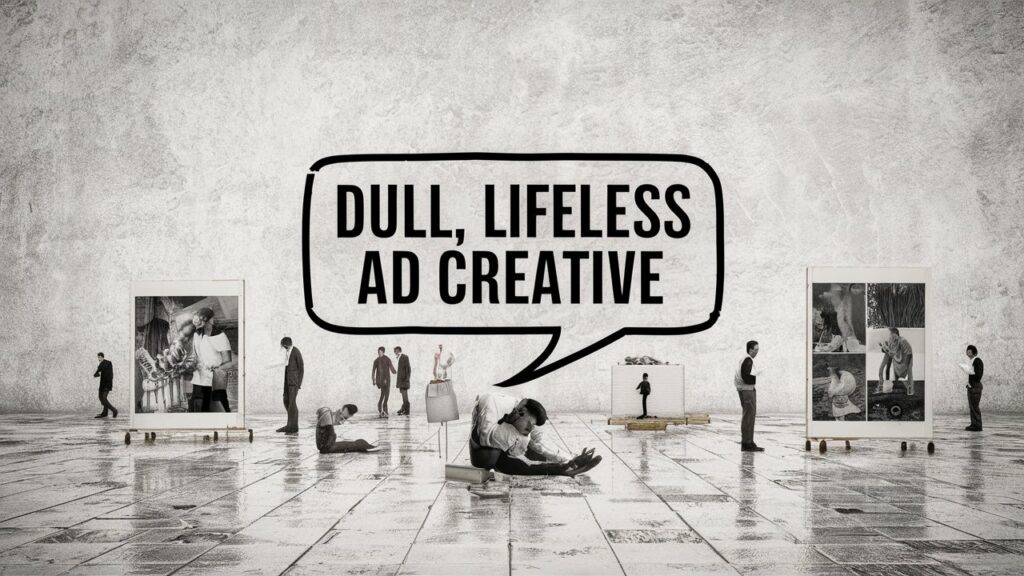- May 19, 2024

As a car dealership owner or marketing manager, paid advertising likely makes up a huge chunk of your annual marketing budget. Whether you’re running search ads, social media campaigns, display banners, or video promos, those ad dollars need to translate into real results.
More website visitors. More showroom foot traffic. More sales and revenue to show for your investment.
Yet so many dealerships struggle to see a positive return from their paid ads efforts. The campaigns underperform, fail to engage the right audiences, and ultimately become expensive digital tombstones sapping away marketing ROI.
What’s holding these paid ads back from generating the new customer acquisitions and sales they should?
Today, I’m going to share the top 10 paid ads mistakes I’ve seen kill dealerships’ marketing ROI over my decade-plus running automotive advertising campaigns. Avoid these pitfalls and you’ll be well on your way to paid ads success.

This is the foundation every paid ads campaign is built upon – are you clear on what constitutes a conversion or “win” for your dealership? Too many marketers skip this crucial step and just set campaigns to optimize for clicks or web traffic alone.
Those are surface metrics that don’t ultimately translate into ROI. You have to dig deeper to identify and relentlessly track the goals that truly impact your business. Want to sell more cars? Then your conversion goal should be centered around lead submissions from in-market shoppers. Aiming for showroom visits? Optimize campaigns for driving map listings views and “Get Directions” clicks.
Get laser-focused on the actions that move the revenue needle. Everything else is just expensive vanity.

Pay-per-click advertising is amazing because it lets you hyper-target your promotions to specific audiences most likely to take your desired conversion action. Sadly, most dealerships fail to properly leverage this capability and instead opt for broad targeting that shows their ads to disinterested shoppers.
Dissect your audience data to build tailored targeting for in-market shoppers at each stage of the funnel. Maybe a “Shopping for [Make/Model]” in-market segment for your high-funnel awareness campaigns. Perhaps layering in affinity categories related to luxury vehicles for reaching those high-net-worth buyers you covet.
If you’re not continually refining and expanding your audience targeting with fresh data, you’re leaving money on the table.

Successful paid ads experts obsesses over creating meticulously structured, keyword-driven campaigns that keep every piece separated and optimized. Most dealerships… just kinda slap everything into one or two catch-all campaigns.
This battle-tested structure employs:
With all the moving pieces working harmoniously to usher the right searchers seamlessly into your funnel.
Instead of throwing broad keyword lists, generic creative, and links to your homepage into a bloated “Dealership Paid Ads” campaign, take the time to map out your campaigns, ad groups, keywords, ad copy, and landing page content in an organized, segmented way.
When done right, paid ads create a cohesive journey from the initial search all the way through to your conversion event. Every step of that funnel maintains a consistent message match that speaks directly to the shopper’s initial search motivation.
Search for “used trucks near me” and the ad copy, landing page content, and conversion paths should all align with that desire for local used truck inventory and sales promotions.
Yet so many dealerships break this thread with their ads promoting mismatched offers, websites showing wildly different messaging, and conversion events totally unrelated to what motivated the click.
No wonder their paid ads struggle to capture leads and sales! Maintain hyper-relevance at every touchpoint of the paid ads experience.

In our digital world overflowing with ads and promotions clamoring for attention, it takes truly dazzling creative to make your paid ads stand out and inspire action. Sadly, dealerships usually opt for boring, snooze-worthy ads your eyeballs glaze right past.
Listen, if your text ads read like dry used-car listings and your image/video ads look like basic model photography anyone could grab from the manufacturer’s media site, your campaigns already lost.
You’ve got to reach through the screen and grab shoppers by their shirt collars with provocative copy that inspires curiosity or desire. Stunning visual creative that commands a double-take the split second it graces their retinas.
With paid ads, you’re not just selling cars. You’re selling the dream, the fantasy, the emotional connection someone craves to own that shiny set of wheels. Make sure your creative fuels that drive.
After all the effort of capturing someone’s attention and ushering them into your funnel through compelling paid ads, you absolutely cannot drop the ball when it comes to cementing the deal with a clear, conversion-driving call-to-action.
What action do you want the prospect to take? Submit a lead form? Book a test drive appointment? Call your sales team?
Don’t leave them guessing or burying your CTA in paragraphs of dense copy. Make the desired conversion event glaringly obvious and simple to act on.
Use straightforward language spelling out the action you want taken (“Call now to schedule your test drive!”). Design the conversion path to minimize any potential friction or drop-off. Make it so dead simple, even your kids could convert.
Because a well-crafted, clickable CTA is the difference between burning ad budget on bounces… and actually earning your paid ads ROI.
Speaking of conversions, paid ads are just one half of the equation. The other half is what happens when someone lands on your website or campaign landing pages. And this is an area automotive marketers tend to neglect.
Known as conversion rate optimization (CRO), these are the tactics involved in maximizing the percentage of visitors who complete your desired conversion action. This includes:
With CRO best practices in place across your post-click conversion paths, those hard-earned paid ad clicks turn into exponentially more leads and sales opportunities.
If you’re simply dumping paid traffic onto a clunky, outdated website and hoping for the best… your ROI is getting clobbered.
To ensure you’re showing the right paid ads to the right audiences, you’d better be tuning into the feedback those campaigns are providing. Most dealerships set it and forget it, missing out on a goldmine of audience insights.
From keyword-level search queries and negative keyword opportunities to top-performing creative and audience segments, there’s a wealth of free data being generated to clue you in on what’s resonating with your target buyers.
Set aside regular time to analyze and optimize based on these insights. If your “top interest” report shows your YouTube ads crushing it with millennial urban drivers, maybe you pump more budget into that geo and audience segment.
If the search terms report highlights unexpected opportunities around your truck inventory, you quickly add new campaigns targeting terms like “[city] ram truck deals” to siphon up that hot demand.
Ask most dealerships where their paid ads investment goes, and you’ll inevitably hear “Google, obviously.” Which is understandable given the dominant market share and consumer reliance on Google search.
But that tunnel vision causes dealerships to leave a mountain of money on the table by ignoring opportunities in other paid ads ecosystems like:
Too many dealerships are missing out on all that low-hanging fruit on other paid platforms. Diversifying your paid ads